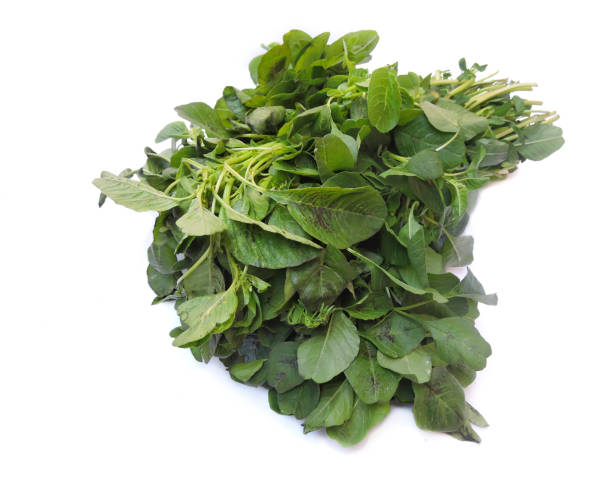

Amaranthus viridis L.
|
It is commonly known as Jungli chaulayi and belongs to the family Amaranthaceae. This leafy vegetable has promising antioxidant capacity and is utilized in the treatment of inflammation, ulcer, diabetes, asthma and hyperlipidemia. Dietary amaranths inhibited splenocyte proliferation, decreased level of IFN-γ and increased the level of IL-4. It contains quercetin that possesses cytotoxic effects against cancer cells. Mode of Consumption : Sauteed, fried and boiled |
| Plant Details | Agro-climatic Zone | Vernacular Names | Pictures |
| Scientific Name: Amaranthus viridis L. Family: Amaranthaceae Juss. Class: Magnoliopsida Order: Caryophyllales Genus: Amaranthus L. Fruiting Season: April-September Parts: Leaves, Tender shoots |
|
Andhra Pradesh : Chilaka-thotakoora Arunachal Pradesh : Nyipak, Khungtou, Gubor oying, Khahram Assam : Kuthura sak, Khanthau khora, Kuduna jibri Goa : Ranbhaji Kerala : Kuppacheera, Kuppakeera Maharashtra : Unadabhaji Manipur : Bawngeh tehneu, Tobophauv, Chengkruk Tamil Nadu : Kuppai Keerai Uttar Pradesh : Jungali Chaulayi |
 Bundle of tender part |
| Compound/Extract | Activity | Mode of Action | Marker/References |
| Plant extract | Cardioprotective | Oral administration of A. viridis at 300 mg kg−1BW for a period of 45 days significantly (P<0.05) reduced the level of C-reactive protein (CRP) in ISO-induced myocardial infarction (MI) rats. | CRP[1] |
| Blanched leaves | Immunomodulatory | Dietary Amaranths inhibited splenocyte proliferation, decreased level of IFN-γ, increased level of IL-4, thus showed their immune modulation role of keeping the Th1/Th2 balance upon anti-CD3 stimulation. | IFN-γ and IL-4[2] |
| Methanolic extract | Antimalarial | The methanolic extracts showed significant inhibitory activity against chloroquine sensitive malaria parasite P. berghei in mice. | [4] |
| Ethanolic extract | Wound healing | Application of ethanolic extract promotes the healing of wounds, with enhanced rate of wound contraction in diabetic-induced rats. | [6] |
| Quercetin | Anticancer | Quercetin possess cytotoxic effects against cancer cells. | [7] |
| Major Class | Metabolites (Content of bioactives: mg/100g Fresh Weight) |
| Autacoid | Arachidonic acid: [5] |
| Betalain | Betacyanin: , Betanidin: [5] |
| Carboxylic Acid | Caffeic acid: 21.5 mg/100g, Chlorogenic acid: 6 mg/100g, Gallic acid: 10.8 mg/100g, p-coumaric acid: 0.9 mg/100g[3] |
| Fatty acid | Linoleic acid: , Linolenic acid: , Oleic acid: [5] |
| Flavonoid | Rutin: 10.1 mg/100g[3] |
| Flavonol | Quercetin: [7] |
| Terpene | Squalene: [5] |
| Vitamin | α-Tocopherol: 6.8 mg/100g, α-Tocotrienol: , β-Tocopherol: , β-Tocotrienol: , γ-Tocopherol: , γ-Tocotrienol: , δ-Tocopherol: , δ-Tocotrienol: [5] |
| Effect | Observation | DOI |
| Disease | Formulation | Reference | Author | TKDL |
| Information from Wealth of India | Reference |
| 4.2, 4.2.1, 4.2.1.1, 4.2.1.3, 4.2.2.3, 4.2.2.5, 4.2.2.8 |
| CSIR-North East Institute of Science and Technology, Jorhat-6, Assam, India
CSIR-Institute of Himalayan Bioresource Technology, Palampur-61,Himachal Pradesh, India |